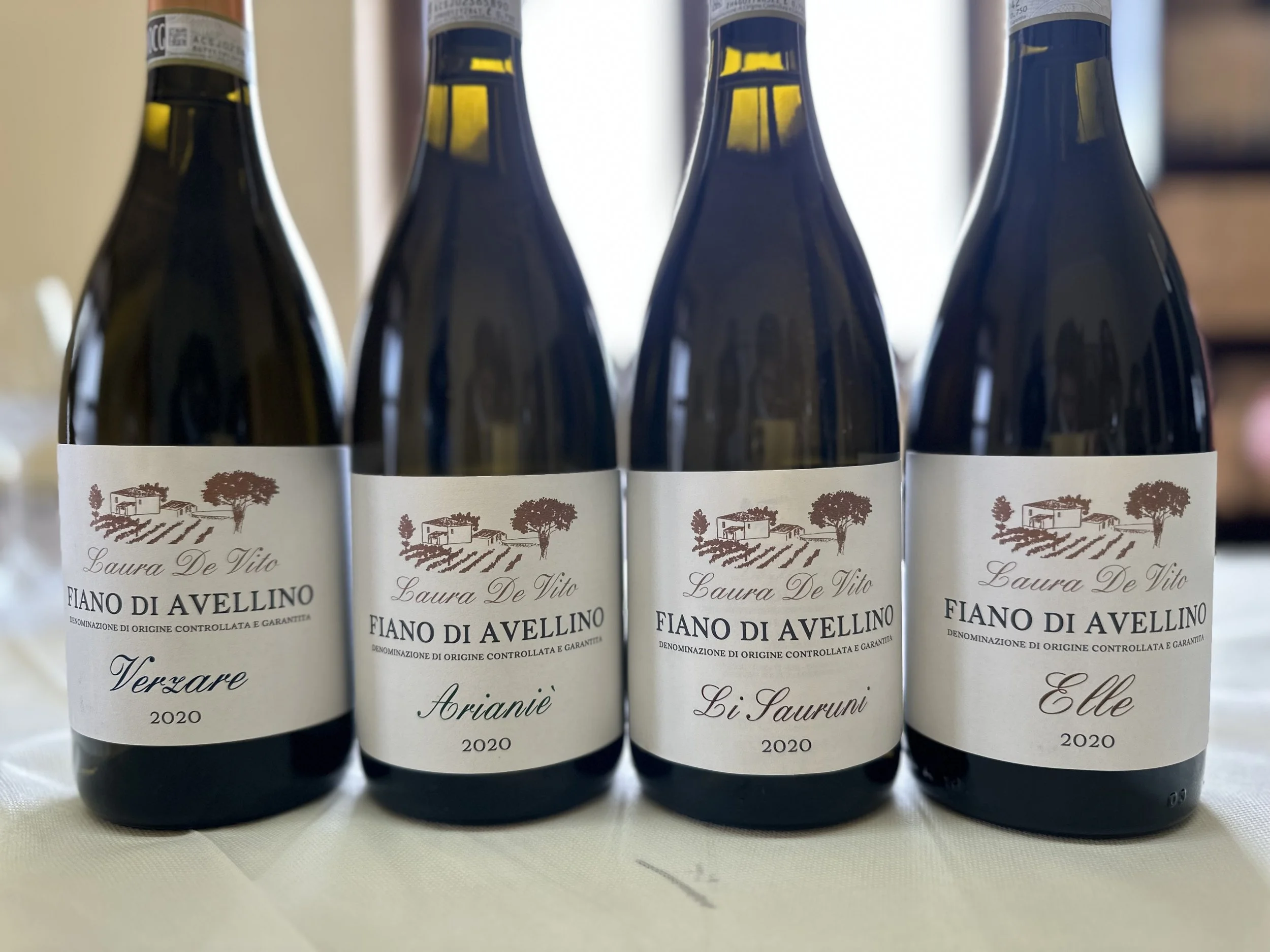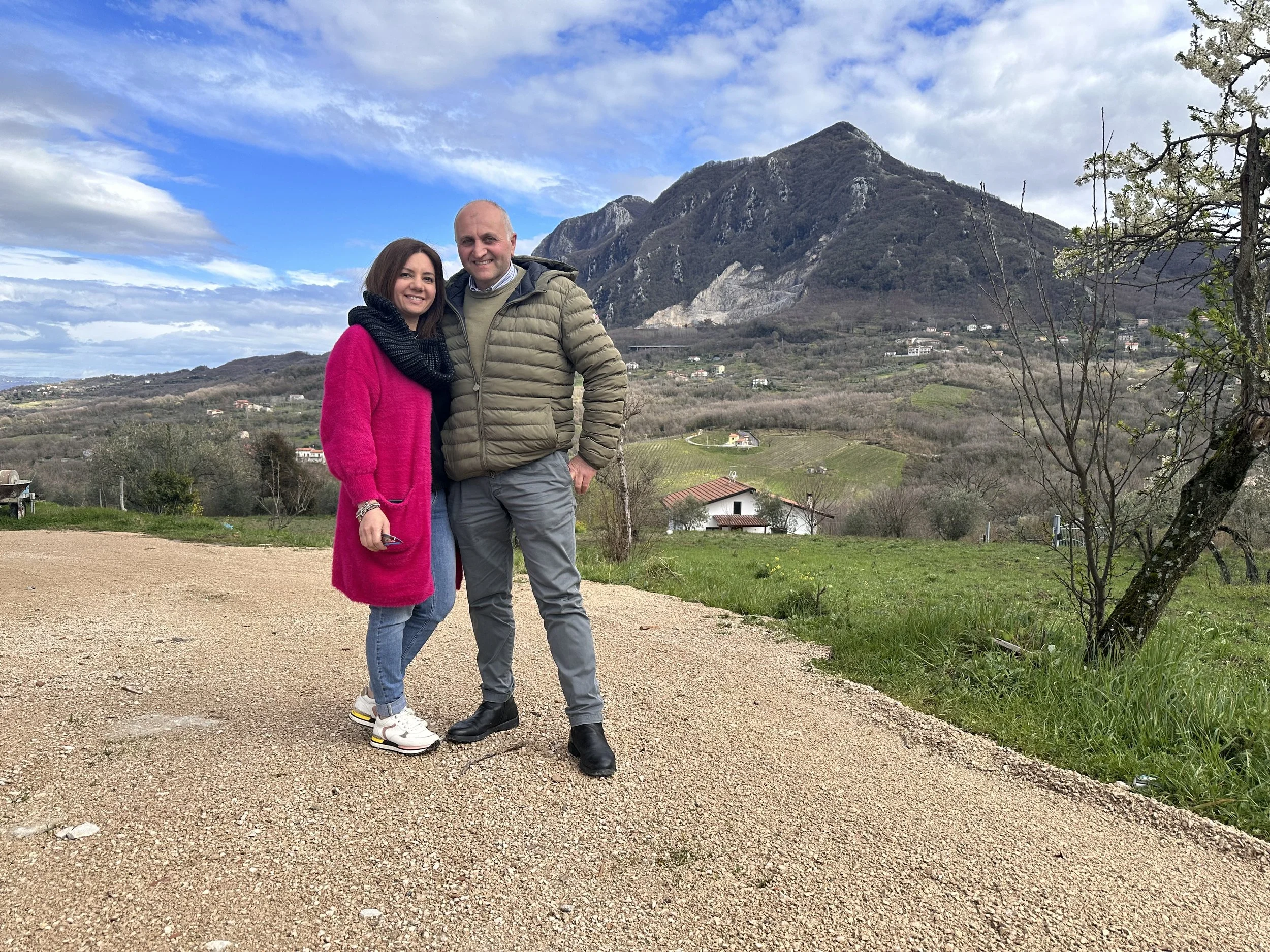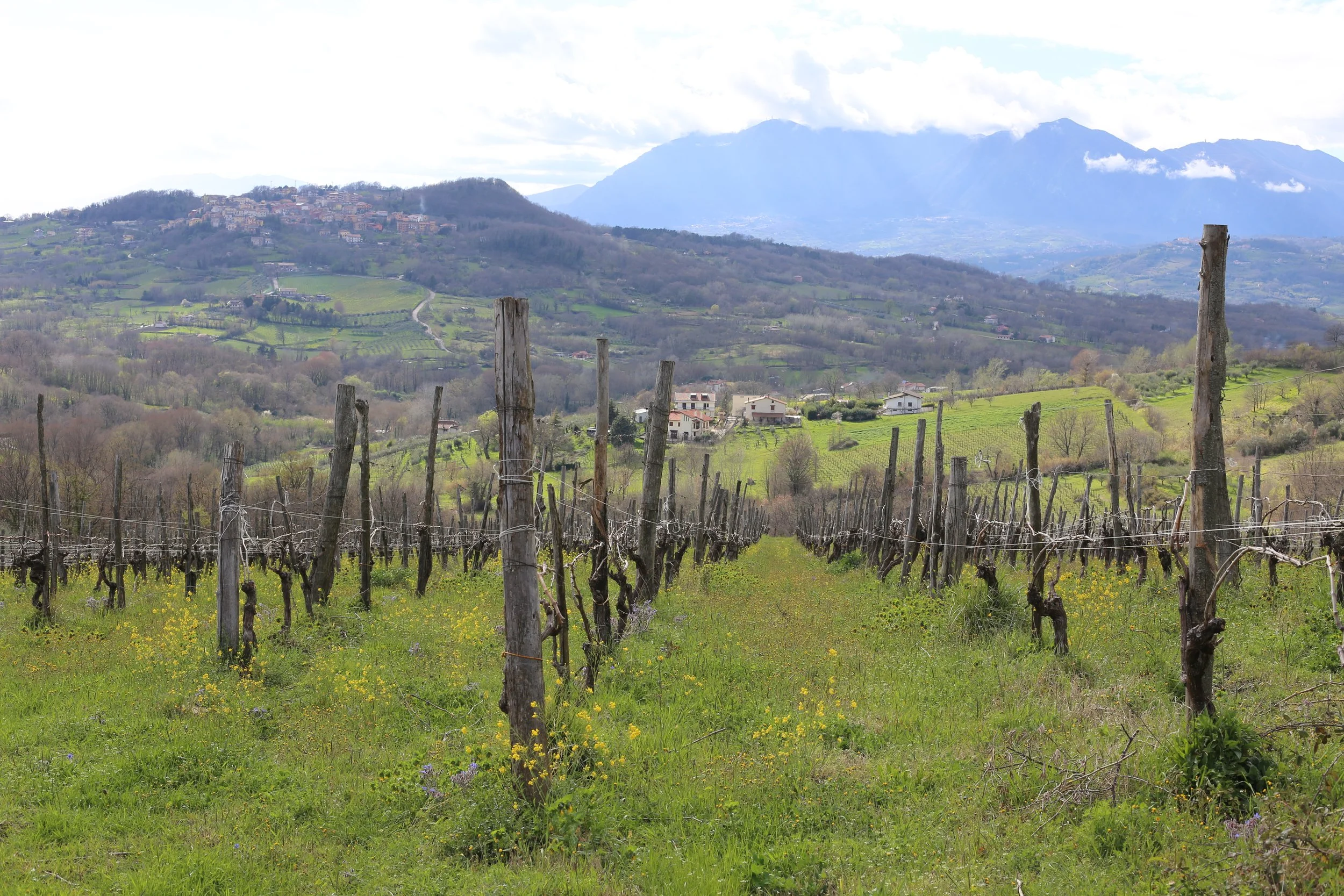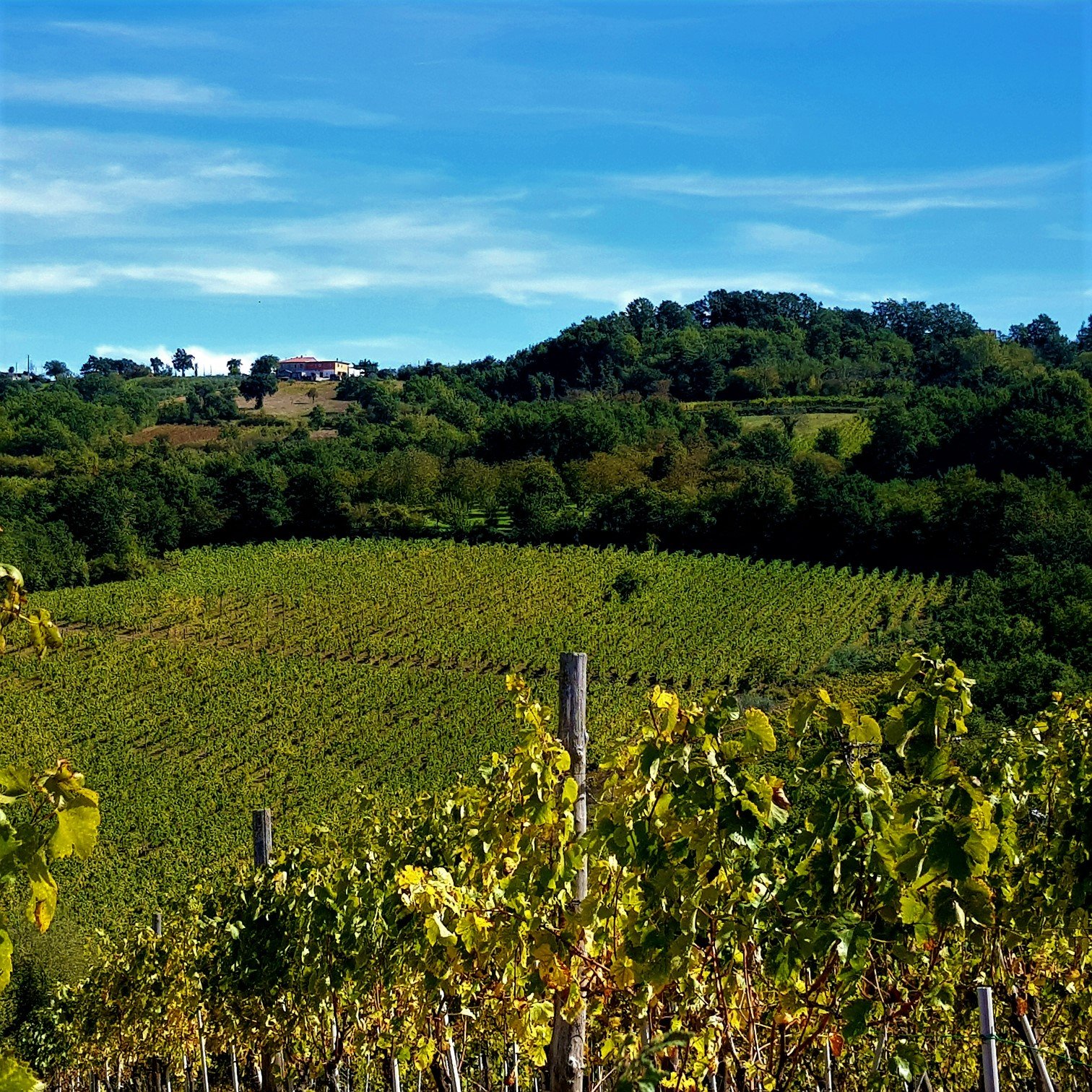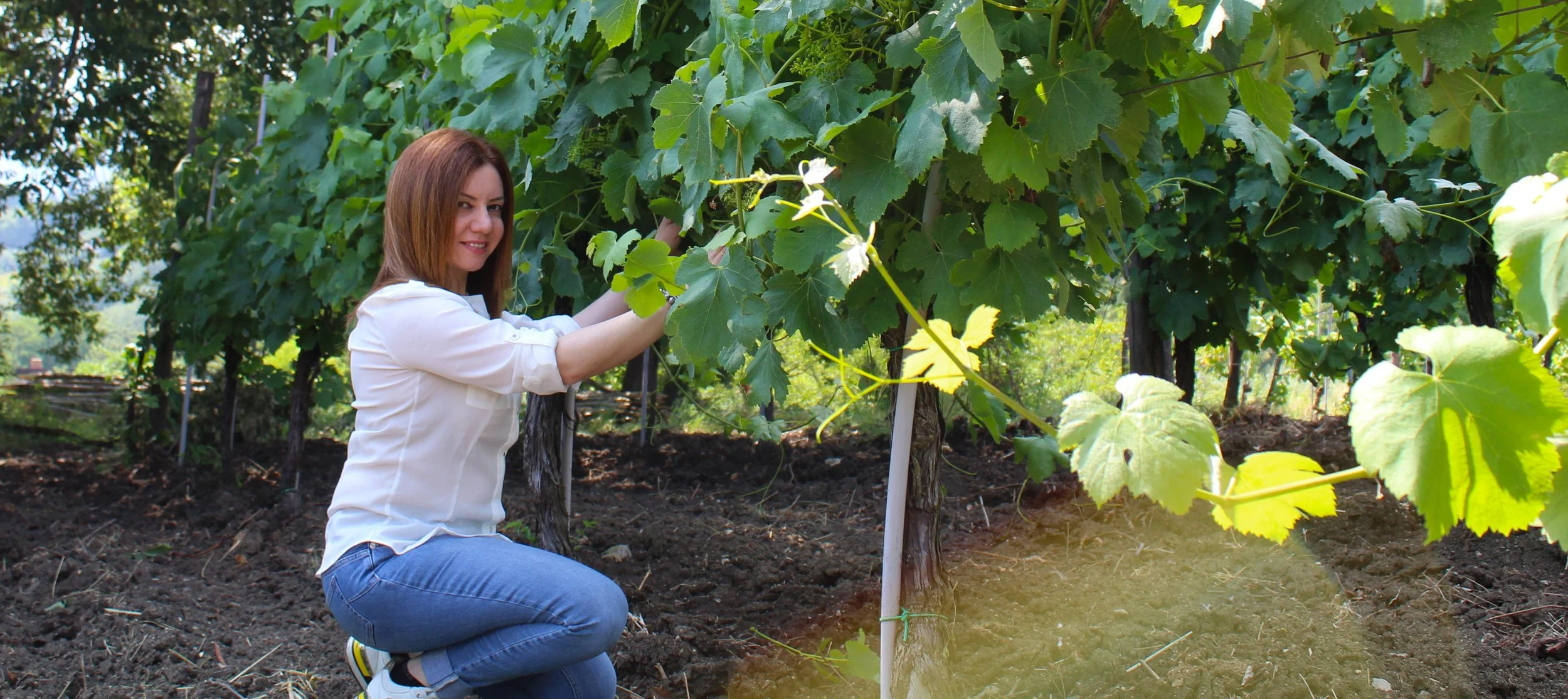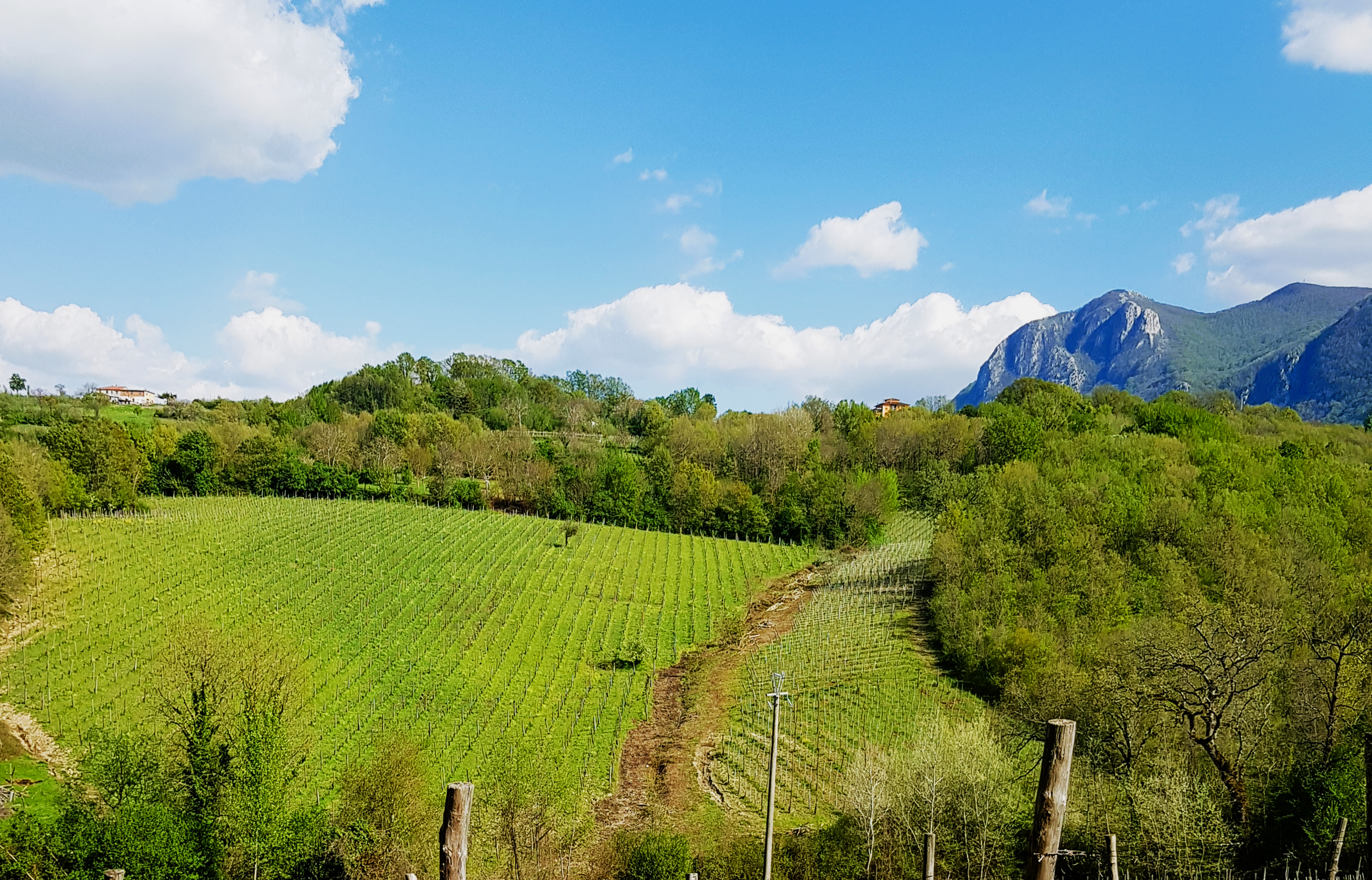Laura de Vito
about laura de vito:
‘I want to make wines that are representative of my territory.’
Fiano is one of Italy’s best white wine-grape varieties, particularly when grown in its home around the town of Avellino. Laura de Vito comes from a grape-growing and winemaking family in the village of Lapio, the historic heart of the Fiano di Avellino appellation. (Her mother’s parents made Aglianico, and her father made Fiano.) Laura is an outstanding producer of Fiano di Avellino. She makes only Fiano, from grapes grown in three ‘contrade’ (sub-areas) of the township of Lapio. Lapio is in the region of Campania, east of Naples, not far from the village of Taurasi.
The vineyards were planted in 1994-5, so they are fully mature; they are planted at relatively high altitude (500-600 meters above sea level), which is very important for making fresh white wines in this southern latitude. (Higher altitude gives cooler night-time temperatures, which gives fresher acidity at harvest.) Farming here is currently in conversion to organic. Laura wants to make her wines in a transparent way, so that they are representative of the variety, the soil, and the climate; so yields are low, the fermentations take place in stainless steel, and the wines are aged for an extended time on the fine lees, also in stainless steel (no oak is used). Fiano can give wines of excellent balance and complexity, and it certainly does so here; the wines are very flavorful, with fresh balancing acidity; aromas and flavors include wet stones, all kinds of fruit notes, and touches of floral notes. As with all great wines it is hard to capture their kaleidoscope of flavors in words.
The classic bottling, from fruit from all three sites, is called Elle; the three ‘cru’ bottlings from the three individual sites are given the dialect names for the contradas, Verzare, Arianè, and Li Sauruni. All three are made in the same straightforward way, which allows the differences in the sites to express themselves clearly.
_____________________________________________
the wines:
‘Elle’ FIANO DI AVELLINO
Estate-bottled Fiano di Avellino from vineyards in three different contradas around the village of Lapio (Verzare, Arianello and Saudoni). The grapes are harvested in mid-October; the fruit is destemmed and lightly pressed, then the resulting juice is fermented to dryness in stainless steel, at controlled temperature, using selected yeasts; it is then racked and aged on the fine lees for 9 months, bottled, and aged in the bottle for a further 15 months. This transparent winemaking method allows the character of Fiano grapes grown in this particular place to shine. I find this wine very attractive on release, but it will certainly improve in the cellar for 10-15 years or possibly longer.
Note that Laura intends the Elle to be equal in quality to the three single-vineyard wines, not a step-down. The fruit is the same quality as that used for the ‘crus’, and the vinification of all four wines is identical, or nearly so. Perhaps this combination of sites is the clearest representation of the variety and the terroir of Lapio; some of the old-school Barolo producers thought the same about combining single sites. Decide for yourself!
Bright pale yellow in color; aroma and flavor of linden, pear, hazelnut, mint, and wild herbs; concentrated yet fresh on the palate, substantial body supported by lively acidity; very long finish. A hint of volcanic tanginess on both nose and palate.
‘Verzare’ FIANO Di AVELLINO
Estate-bottled single vineyard Fiano di Avellino from the contrada Verzare, near the village of Lapio. The vineyard is in limestone-rich soil is at about 500 meters (1,650 feet) above sea level. The grapes are harvested in mid-October; the fruit is destemmed and lightly pressed, then the resulting juice is fermented to dryness in stainless steel, at controlled temperature, using selected yeasts; it is then racked and aged on the fine lees for 9 months, bottled, and aged in the bottle for a further 20 months. This transparent winemaking method allows the character of Fiano grapes grown in this particular place to shine. I find this wine very attractive on release, but it will certainly improve in the cellar for 10-15 years or possibly longer.
Bright pale yellow in color; aroma and flavor of kiwi fruit, mandarine peel, and wild herbs; concentrated yet fresh on the palate, substantial body supported by lively acidity; very long finish.
‘Arianiè’ FIANO Di AVELLINO
Estate-bottled single vineyard Fiano di Avellino from the contrada Arianello, near the village of Lapio. The vineyard is in a mixture of limestone-rich soil, volcanic cinders (from ancient eruptions of Mt. Vesuvius) and sand at about 500-550 meters (1,650-1,800 feet) above sea level. The grapes are harvested in mid-October; the fruit is destemmed and lightly pressed, then the resulting juice is fermented to dryness in stainless steel, at controlled temperature, using selected yeasts; it is then racked and aged on the fine lees for 9 months, bottled, and aged in the bottle for a further 20 months. This transparent winemaking method allows the character of Fiano grapes grown in this particular place to shine. I find this wine very attractive on release, but it will certainly improve in the cellar for 10-15 years or possibly longer.
Bright pale yellow in color; aroma and flavor of wild mint, Williams pear, apple, and toasted hazelnut; concentrated yet fresh on the palate, substantial body supported by lively acidity; very long finish. This wine shows the classic volcanic soil notes on nose and palate, a kind of bright tanginess.
‘Li Sauruni’ FIANO Di AVELLINO
Estate-bottled single vineyard wine from the contrada Sauruni, near the village of Lapio. The vineyard is in limestone-rich soil is at about 600 meters (2,000 feet) above sea level, the highest of de Vito’s sites. The grapes are harvested in mid-October; the fruit is destemmed and lightly pressed, then the resulting juice is fermented to dryness in stainless steel, at controlled temperature, using selected yeasts; it is then racked and aged on the fine lees for 9 months, bottled, and aged in the bottle for a further 20 months. This transparent winemaking method allows the character of Fiano grapes grown in this particular place to shine. I find this wine very attractive on release, but it will certainly improve in the cellar for 10 years or possibly longer.
Bright pale yellow in color; aroma and flavor of linden, pear, apricot, and a touch of struck flint; concentrated yet fresh on the palate, substantial body supported by lively acidity; very long finish.

